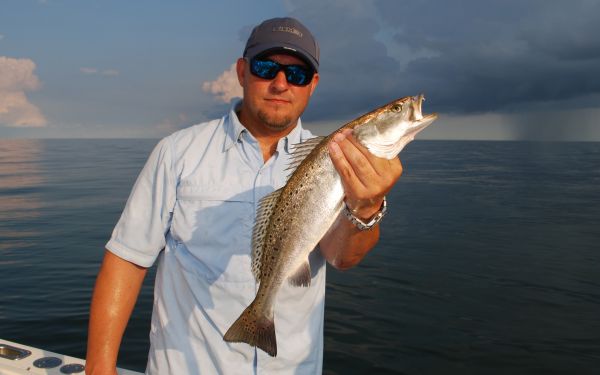
Speckled trout fishing offshore of Vermilion Bay is a seasonal business, primarily because of the fickle behavior of the Atchafalaya River.
When river discharges are high, typically from December into the summer, a huge plume of muddy, fresh water intrudes into the Gulf of Mexico. Fishing offshore rather than inshore offers more flexibility (but not immunity) in evading the river’s discharges.
“Water clarity is important for fishing trout offshore,” Shane Zeringue stressed. “It needs to be clear. I want to see the croakers swimming in the bottom of my livewell. On the other hand, the water can be too clear. Then trash fish — Spanish mackerel, ladyfish and sharks — cut your tackle up. They keep you constantly retying.”
“And you lose your bait,” Lane LeMaire added. “You can’t afford to do that.”
Zeringue agreed.
“Bait is always the most-stressful part of the trip — getting it and keeping it alive,” he said.
The men of Team Bone-a-Fide chase offshore speckled trout from May through mid-September, when teal season beckons. All of them are nuts about duck hunting.
They begin the season by running around the east end of Marsh Island headed for the Eugene Island platforms in 15 to 20 feet of water. This puts them to the east of the Atchafalaya River’s westward-tending discharge plume.
As the season progresses and the river’s flow decreases, they move westward.
As catches slow at Eugene Island 74 and vicinity, they begin to go offshore through Southwest Pass to fish the platforms in the South Marsh Island and Vermilion blocks.
“It seems that the fish move westward until September; then they move inward,” Zeringue explained.
By inward, he means Vermilion Bay.